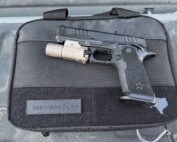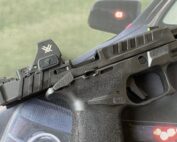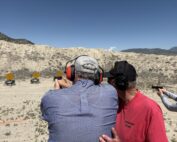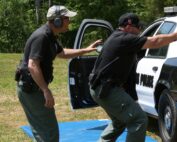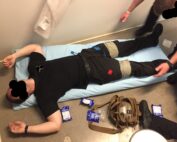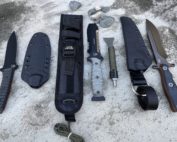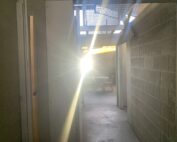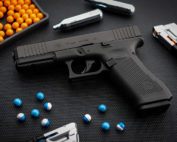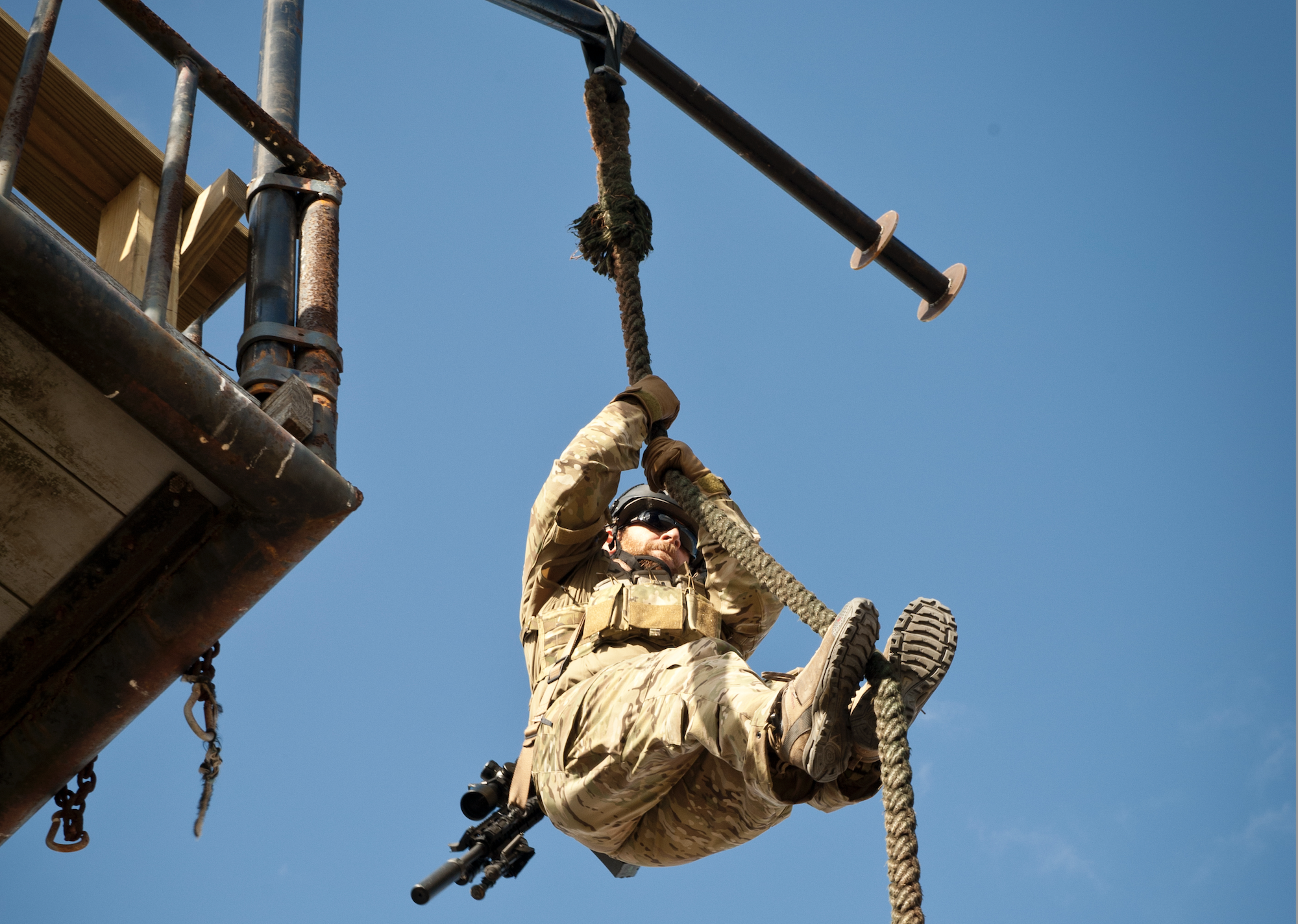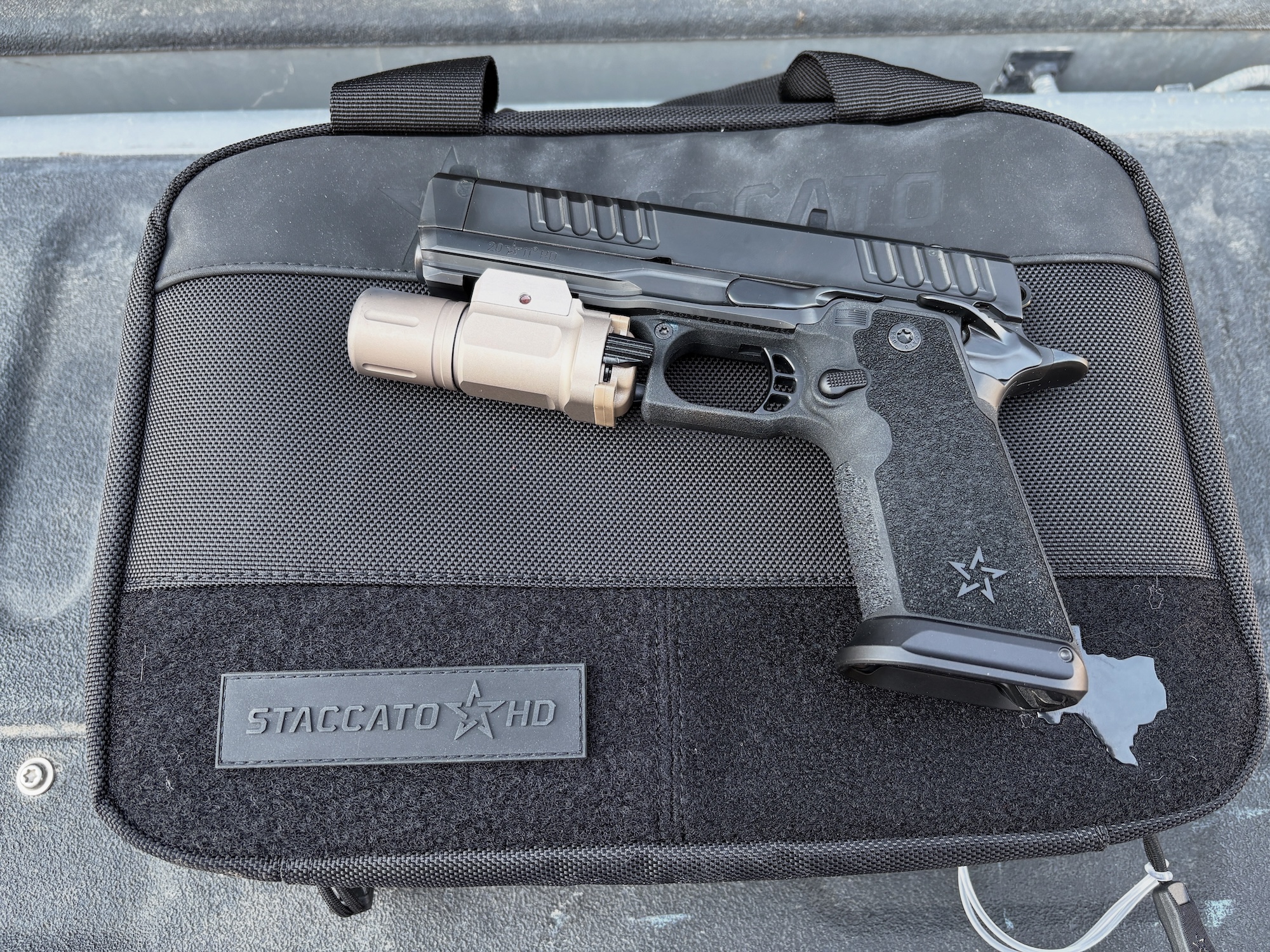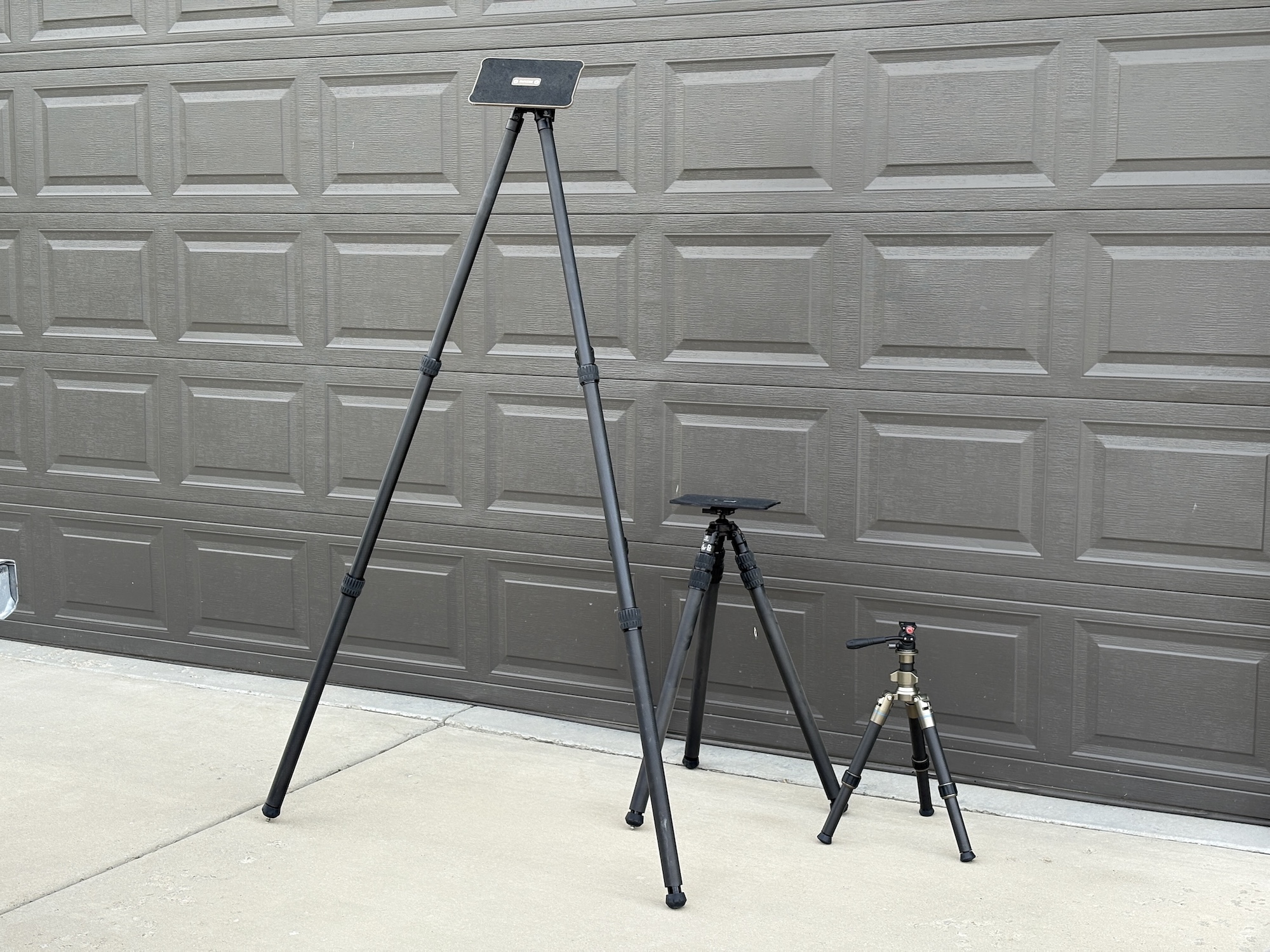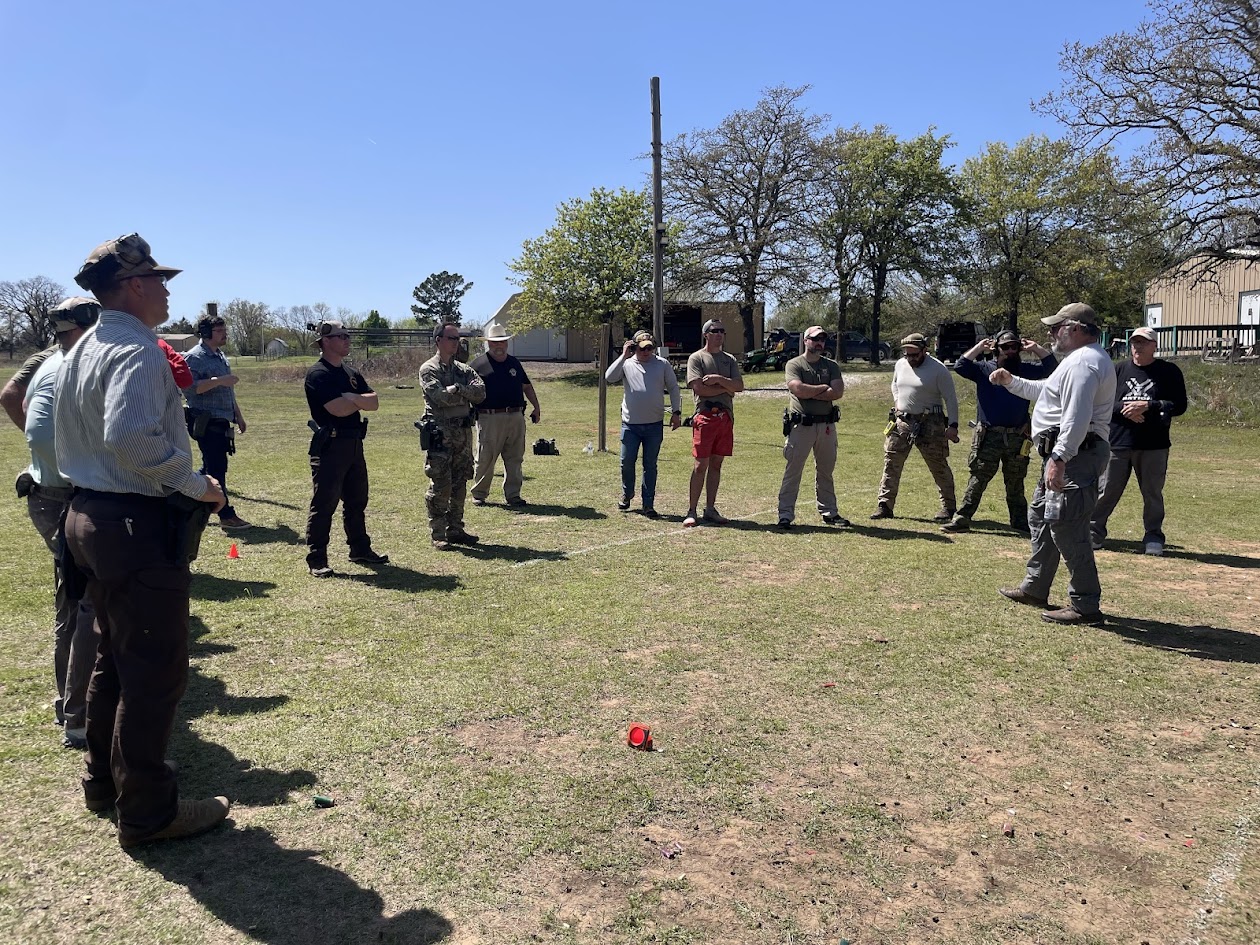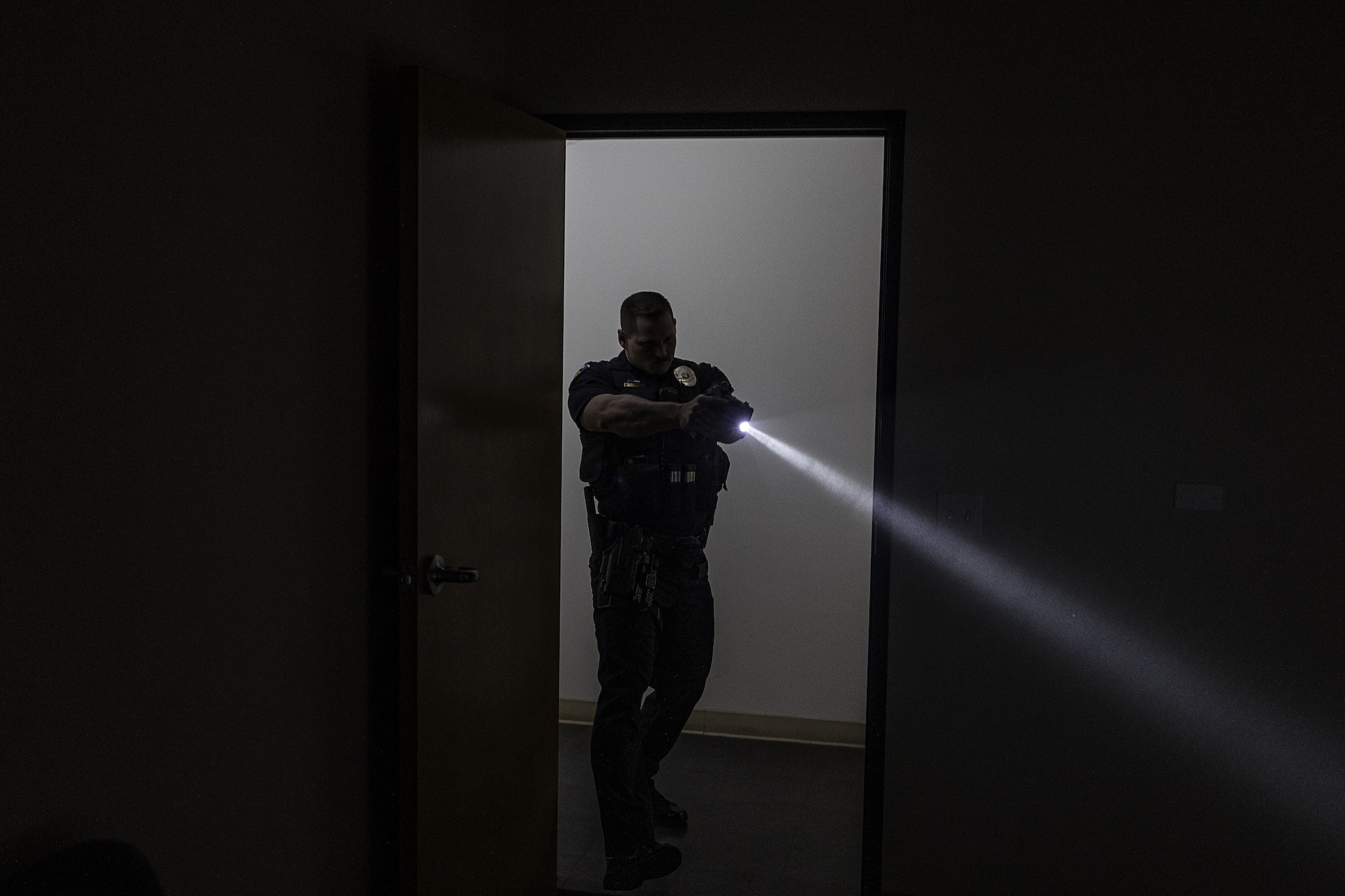
feature2022_Turbo-Film_JD_5H5A355 5 Searching
In recent years, there has been a notable increase in the number of law enforcement agencies equipping or authorizing weapon-mounted lights (WMLs) on duty handguns, rifles, and shotguns. As technology advances, these lights have become more compact and powerful, making them a valuable addition to the law enforcement officer’s standard equipment. The adoption of WMLs reflects a broader commitment to leveraging technology to enhance public safety and officer effectiveness.
A WML is an integral part of the weapon system, providing light in critical low-light situations without hindering the ability to shoot. It frees up a hand for other tasks and ensures the light is always aligned with the weapon. While it complements a flashlight, it doesn’t replace it – your handheld light is your primary illumination tool. If you’re not justified in drawing your gun, you’re not justified in pointing a WML.
When searching with a WML is warranted, baseboard and umbrella lighting techniques can help avoid muzzling non-threats by illuminating an area without aiming the gun directly at it. These techniques also offer additional advantages.
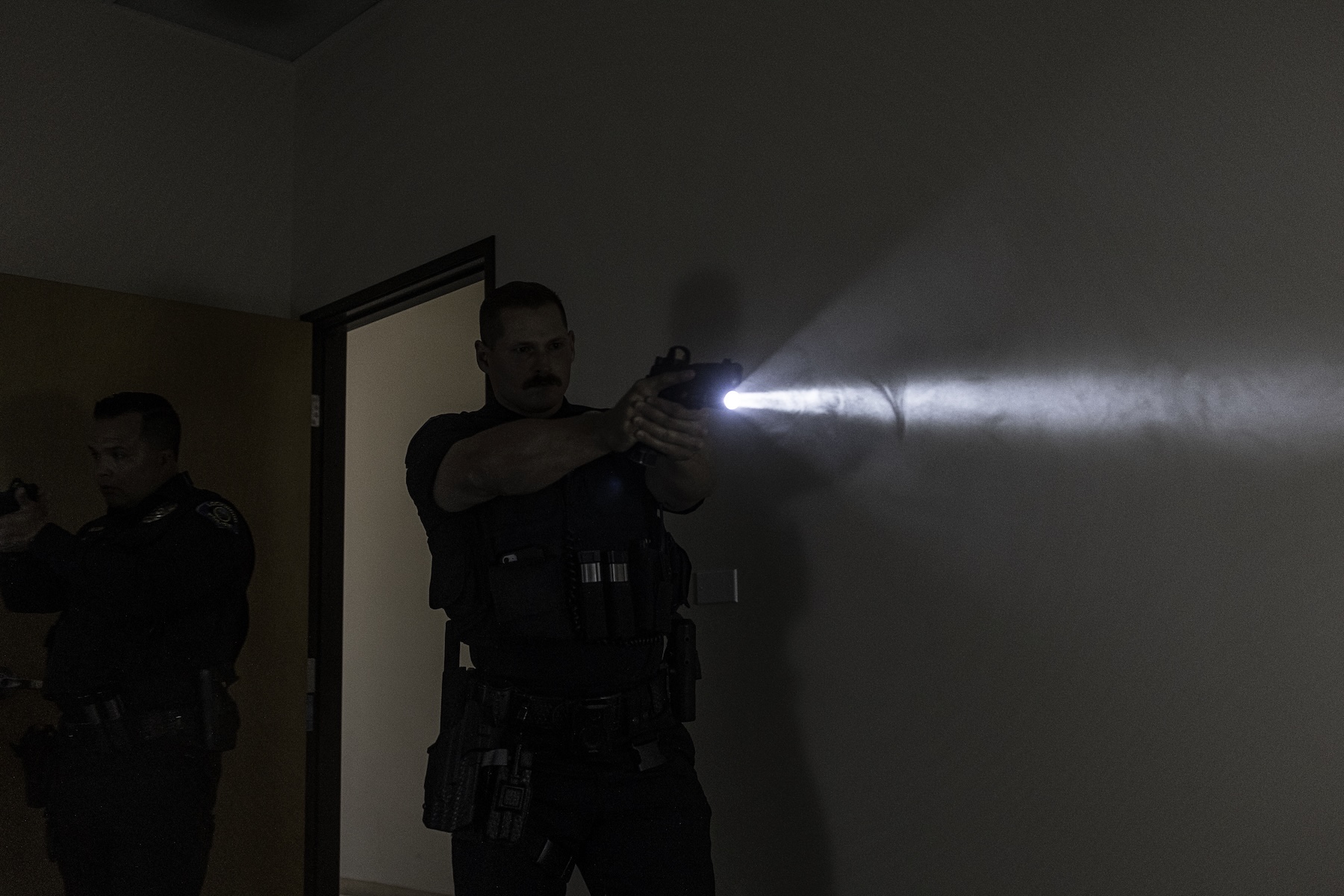
A weapon-mounted light can provide some significant advantages. However, proper training is essential to maximize its benefits (P/C SureFire).
Baseboard Lighting
Baseboard lighting is ideal for structures with high ceilings. In this method, you direct your light downward in front of you at the room’s baseboard. This setup illuminates your immediate surroundings and allows light to bounce off surfaces without disrupting your visual horizon.
The technique uses the beam’s full pattern, including both the hotspot and the spill. Even if your light has a tight beam pattern, baseboard lighting will cause reflections off the floor and walls, scattering the light more evenly across a wider area.
From a tactical perspective, this method reduces tunnel vision and enhances situational awareness when entering rooms with unknown threats. This adjusted weapon position does not significantly impact your reaction or engagement times, as – like the low ready – it ensures that you can respond swiftly to any threats.
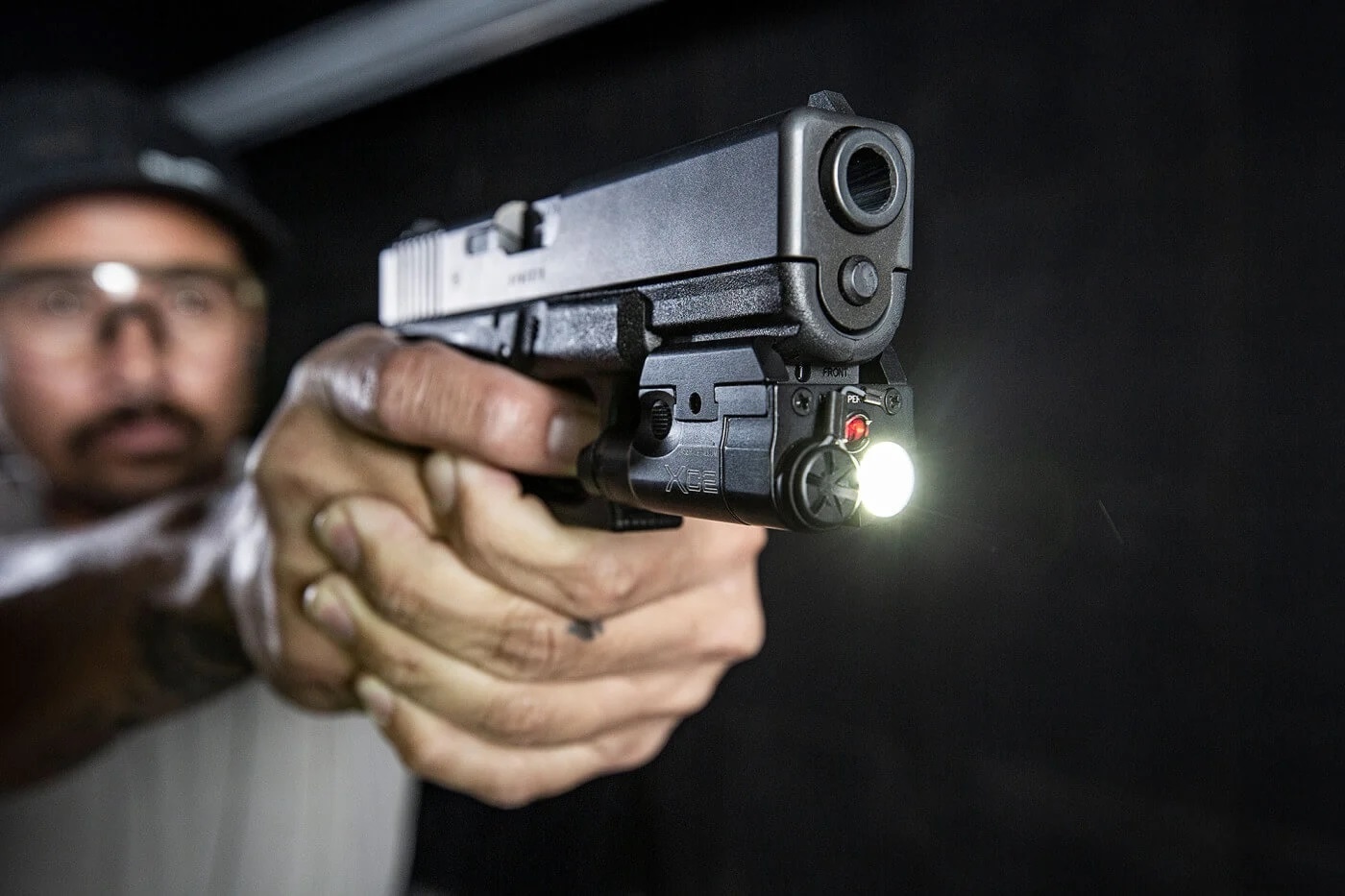
Training with your weapon-mounted light is essential. There are numerous drills you can practice in daylight conditions. This shooter is training with SureFire’s XC2-B (P/C SureFire).
Umbrella Lighting
Opposite to baseboard lighting is the umbrella lighting technique. As the name suggests, this method involves bouncing light above you. Umbrella lighting is more suitable for indoor environments with low ceilings, like houses or office buildings. Here, you point your light upwards, so the light reflects off the ceiling, diffusing and illuminating the room and blind spots, offering a clearer view of the entire room. By creating a broad light spread, umbrella lighting can reveal the presence of an individual hiding behind objects or in corners.
This technique allows for a rapid assessment of the room, making it easier to identify potential threats or objects of interest without the need for a detailed search. For those who prefer a high-ready position, umbrella lighting feels more natural and can be seamlessly integrated into their existing tactics.
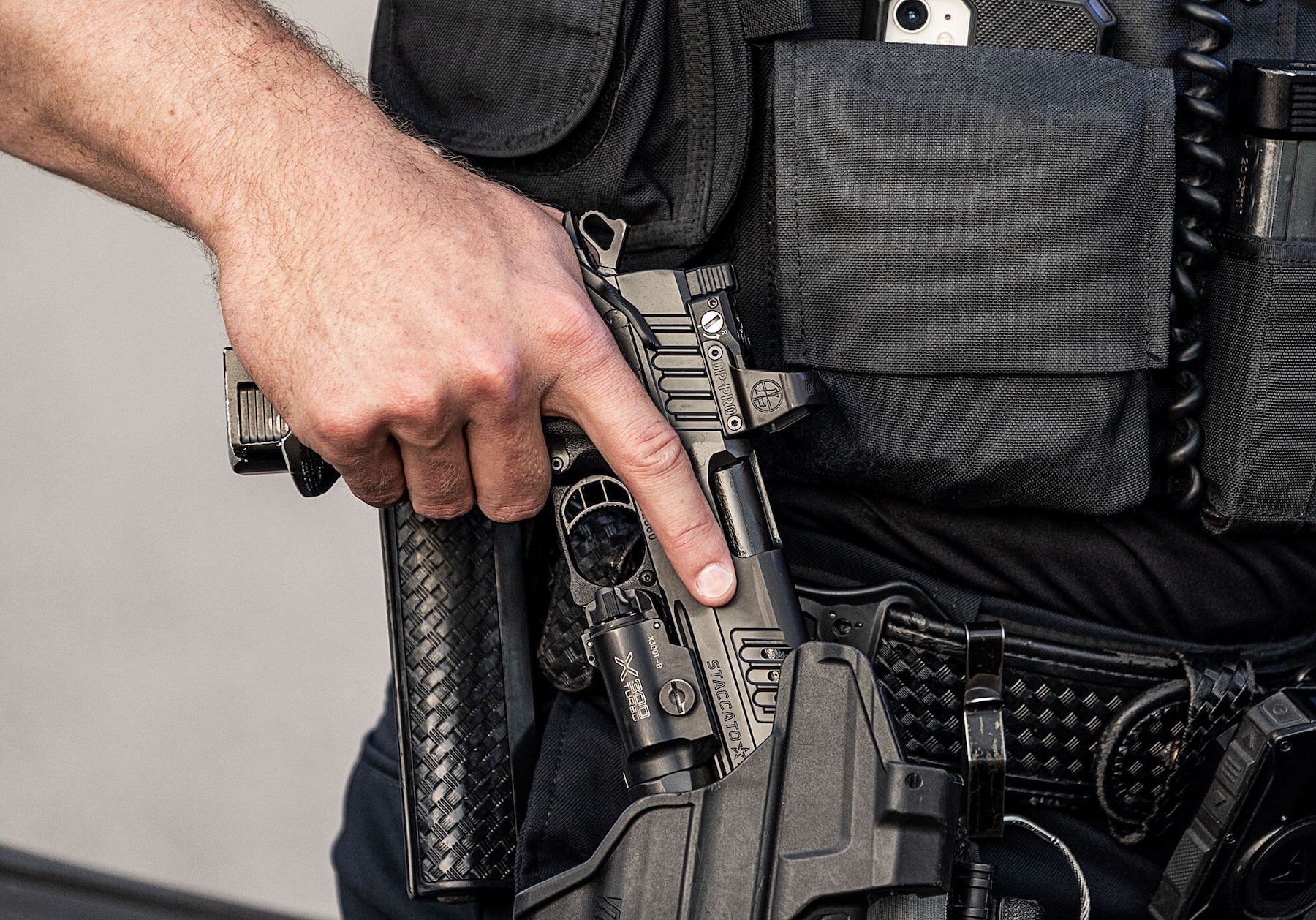
Weapon-mounted lights are now standard on duty guns. SureFire’s X300 family has been a staple in the tactical community for over 15 years (P/C SureFire).
Other Concerns
One concern, especially indoors and with high-output lights, is the potential issue of “backsplash.” This refers to the light reflecting off a shiny surface, which then bounces back towards the source or the user’s eyes. This can cause temporary vision impairment or glare, making it harder to see clearly, and potentially giving away the officer’s position. Techniques like baseboard or umbrella lighting can help mitigate this effect by directing the light in a way that reduces these reflections.
These techniques also mitigate another potential issue. In low-light situations, some want to extend their arms and firearm completely while either looking through your optic or slightly over your sights. This makes target acquisition straightforward because the barrel and light are already aligned. However, aside from needlessly muzzling someone, this approach has significant drawbacks when it comes to target identification. The weapon itself can obstruct your view and provide an incomplete picture of the situation.
If an individual’s hands are lowered, your weapon may block your view, especially when using a carbine or shotgun. This obstruction can prevent you from seeing what the individual is holding or is within arm’s reach. Additionally, some weapon lights have a very intense center hotspot with minimal spill, which can further hinder your ability to see the individual’s hands or any concealed weapons.
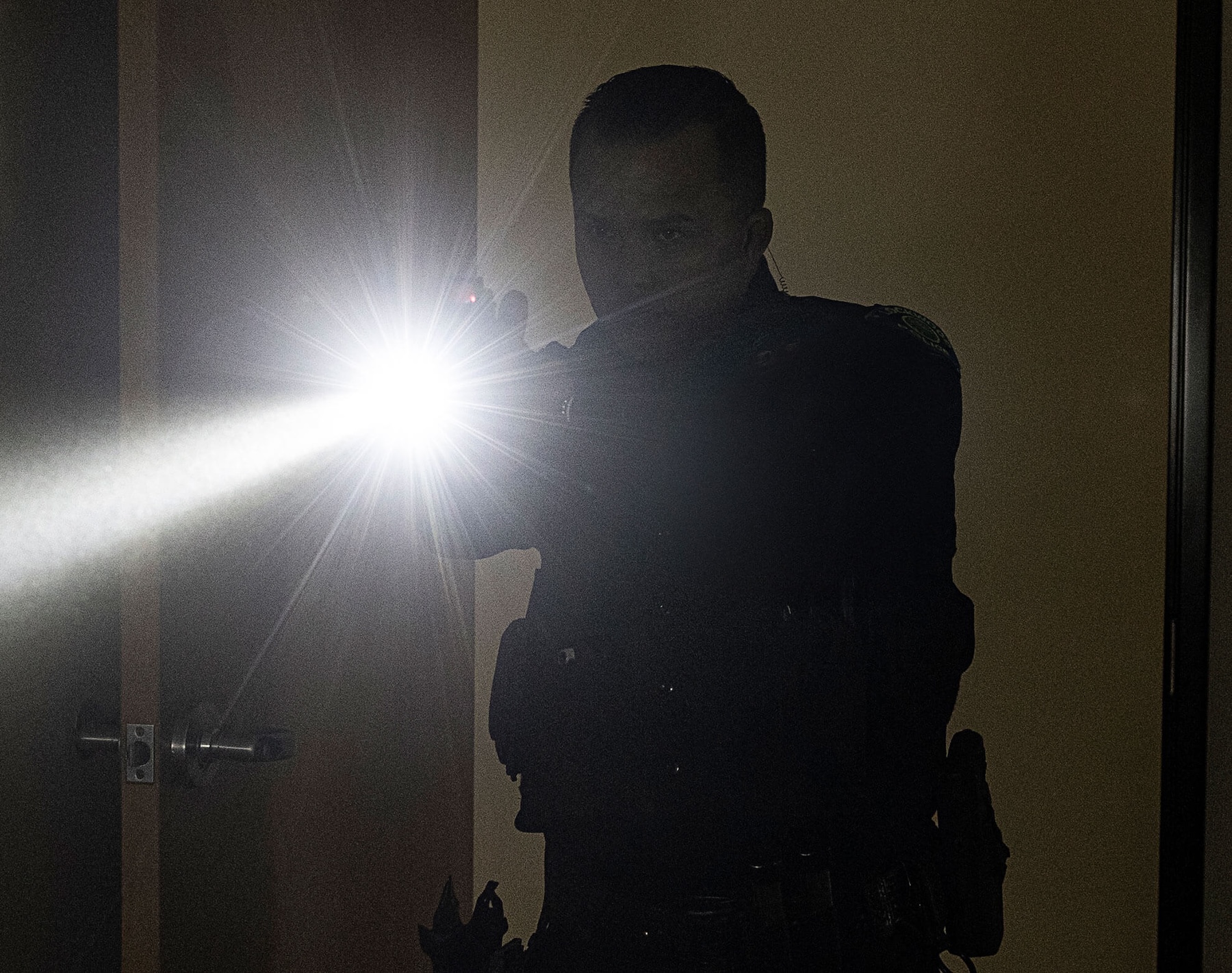
Yes, you can search with a weapon-mounted light; however, you must keep the weapon out of your field of view and avoid needlessly muzzling individuals (P/C SureFire).
Training is Essential
Training with a WML is essential to ensure proficiency and safety. In addition to taking a low-light shooting class, which I highly recommend you do, there are numerous drills you can practice in daylight conditions that will significantly enhance your WML competency.
Begin by including both your handheld and weapon-mounted lights in your dry practice. This helps you become accustomed to the light’s operation and integrates its use into your “procedural memory.” If your light lacks a grip switch, it’s generally advised to activate a handgun-mounted light with the thumb of your support hand to avoid the risk of a negligent discharge. Using the index finger of your shooting hand to activate the light can be risky, especially under stress. (Editor’s note: But if you must activate the pistol light with your trigger finger, do so by sweeping the switch upward.)
Incorporate your handheld and weapon-mounted lights into your regular live-fire shooting drills. Practice transitioning from that handheld light to a WML. This is crucial for situations where you start with a handheld light but need to switch to your WML. Additionally, practice shooting while activating your WML to simulate real-life scenarios where you might need to illuminate a target quickly.
Incorporating inert replica training weapons with your WML mounted will allow you to safely run mock scenarios while navigating and identifying targets in a controlled environment, enhancing your ability to operate in low-light conditions.
Employing light discipline is essential. The light should be turned on only when needed. Train to use momentary activation of your lights while scanning and moving. This technique helps you maintain situational awareness while reducing the risk of being a target.
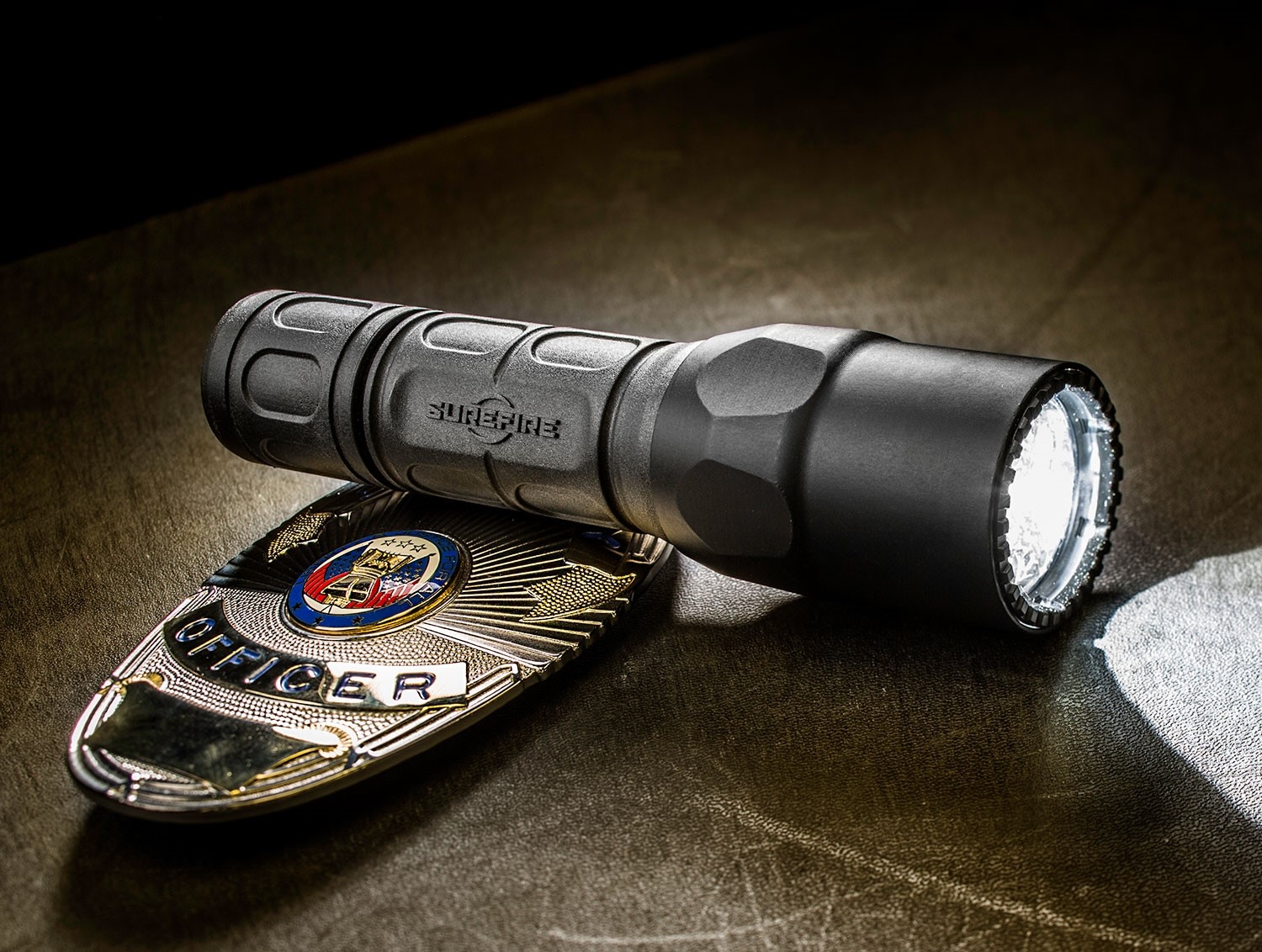
A weapon-mounted light is not a replacement for a hand-held flashlight and must not be treated or used as such; they – like this Surefire G2X-LE – are part of the system (P/C SureFire).
Final Thoughts
A WML offers some significant advantages. However, proper use is essential to maximize its benefits. Understanding the environmental conditions and the specific features of the WML, such as beam pattern and light output, is also critical for effective deployment. SureFire® is an excellent resource and offers a wide range of lighting solutions.


 (+4 rating, 4 votes)
(+4 rating, 4 votes)